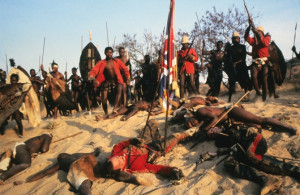
Below is my current list of favorite movies set in the 1870s:
TOP TEN FAVORITE MOVIES SET IN THE 1870s

1. “The Age of Innocence” (1993) – Martin Scorcese directed this exquisite adaptation of Edith Wharton’s award winning 1920 novel about a love triangle within New York’s high society during the Gilded Age. Daniel Day-Lewis, Michelle Pfieffer and Oscar nominee Winona Ryder starred.

2. “The Big Country” (1958) – William Wyler directed this colorful adaptation of Donald Hamilton’s 1958 novel, “Ambush at Blanco Canyon”. The movie starred Gregory Peck, Jean Simmons, Carroll Baker and Charlton Heston.

3. “True Grit” (2010) – Ethan and Joel Coen wrote and directed this excellent adaptation of Charles Portis’ 1968 novel about a fourteen year-old girl’s desire for retribution against her father’s killer. Jeff Bridges, Matt Damon and Hattie Steinfeld starred.

4. “Far From the Madding Crowd” (2015) – Carey Mulligan, Matthias Schoenaerts, Tom Sturridge and Michael Sheen starred in this well done adaptation of Thomas Hardy’s 1874 novel about a young Victorian woman who attracts three different suitors. Thomas Vinterberg directed.

5. “Around the World in 80 Days” (1956) – Mike Todd produced this Oscar winning adaptation of Jules Verne’s 1873 novel about a Victorian gentleman who makes a bet that he can travel around the world in 80 days. Directed by Michael Anderson and John Farrow, the movie starred David Niven, Cantiflas, Shirley MacLaine and Robert Newton.

6. “Stardust” (2007) – Matthew Vaughn co-wrote and directed this adaptation of Neil Gaman’s 1996 fantasy novel. The movie starred Charlie Cox, Claire Danes and Michelle Pfieffer.

7. “Fort Apache” (1948) – John Ford directed this loose adaptation of James Warner Bellah’s 1947 Western short story called “Massacre”. The movie starred John Wayne, Henry Fonda, John Agar and Shirley Temple.

8. “Zulu Dawn” (1979) – Burt Lancaster, Simon Ward and Peter O’Toole starred in this depiction of the historical Battle of Isandlwana between British and Zulu forces in 1879 South Africa. Douglas Hickox directed.

9. “Young Guns” (1988) – Emilio Estevez, Kiefer Sutherland and Lou Diamond Phillips starred in this cinematic account of Billy the Kid’s experiences during the Lincoln County War. The movie was directed by Christopher Cain.

10. “Cowboys & Aliens” (2011) – Jon Favreau directed this adaptation of Scott Mitchell Rosenberg’s 2006 graphic novel about an alien invasion in 1870s New Mexico Territory. The movie starred Daniel Craig, Harrison Ford and Olivia Wilde.dom
Filed under: Movie Review | Tagged: abigail spencer, adam beach, alec mccowen, alex cowen, alexis smith, alfonso bedoya, anna calder marshall, around the world in 80 days, barry pepper, belle epoque, ben barnes, bob hoskins, british empire, burl ives, burt lancaster, cantiflas, carey mulligan, carroll baker, casey siemaszko, cedric hardwicke, cesar romero, charles bickford, charles boyer, charlie cox, charlie sheen, charlton heston, chuck connors, claire danes, coen brothers, comics, dakin matthews, daniel craig, daniel day-lewis, david niven, denholm elliot, dexter fletcher, dick foran, domhnall gleeson, edith wharton, elizabeth marvel, emilio estevez, evelyn keyes, george raft, geraldine chaplin, gilbert roland, gilded age, gregory peck, hailee steinfeld, harrison ford, henry cavill, henry fonda, history, jack palance, james faulkner, jason flemyng, jean simmons, jeff bridges, joanne woodward, joe e. brown, john agar, john carradine, john ford, john wayne, jon favreau, jonathan pryce, josh brolin, julian rhind-tutt, juno temple, keith carradine, kiefer sutherland, literary, lou diamond philips, mark strong, mark williams, marlene dietrich, martin scorsese, matt damon, matthew vaughn, matthias schoenaerts, michael gough, michael hough, michael jayston, michael sheen, michelle pfieffer, miriam margolyes, movies, nathaniel parker, norman lloyd, old hollywood, old west, olivia wilde, pedro armendariz, peter o'toole, peter vaughn, politics, richard e. grant, robert morley, robert newton, robert sean leonard, ronald colman, rupert everett, shirley maclaine, shirley temple, sian phillips, sienna miller, simon ward, stuart wilson, terence stamp, thomas hardy, thomas vinterberg, tom sturridge, travel, trevor howard, victor mclaglen, victorian age, ward bond, william wyler, winona ryder | Leave a comment »



